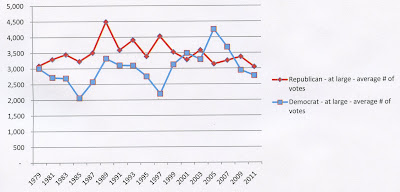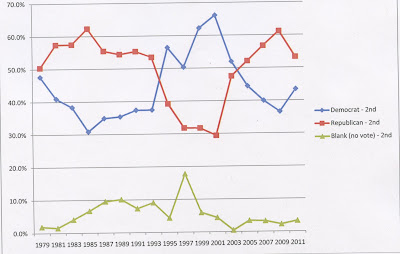Cheshire election history (1979 - 2012): US House
Continuing with Cheshire's election history since 1979, I offer the history of our Congressional elections. For all of this time, we've been a part of the US House's 5th Congressional district or CT-5.

You'll notice that for the CT-5 I've included both non-major parties and "blank" votes. And I feel it's worth noting that a good amount of non-major party votes include cross-endorsements for major party candidates, such as 900 votes for Chris Murphy in 2008 on the Working Families party line.
And as we write the history books on Cheshire politics, as I've mentioned before, in 2005 Chris Murphy went to Rahm Emanuel and asked for money to run against then-incumbent Congressman Nancy Johnson. When Rahm asked for evidence that the CT-5 was winnable, Murphy pointed to electoral trends in Cheshire, such as party affiliation.
Murphy got the money and it appears to me that recent history has proved Chris Murphy's assertions to be true.
For the source data on this graph, click here.
Tim White


















































